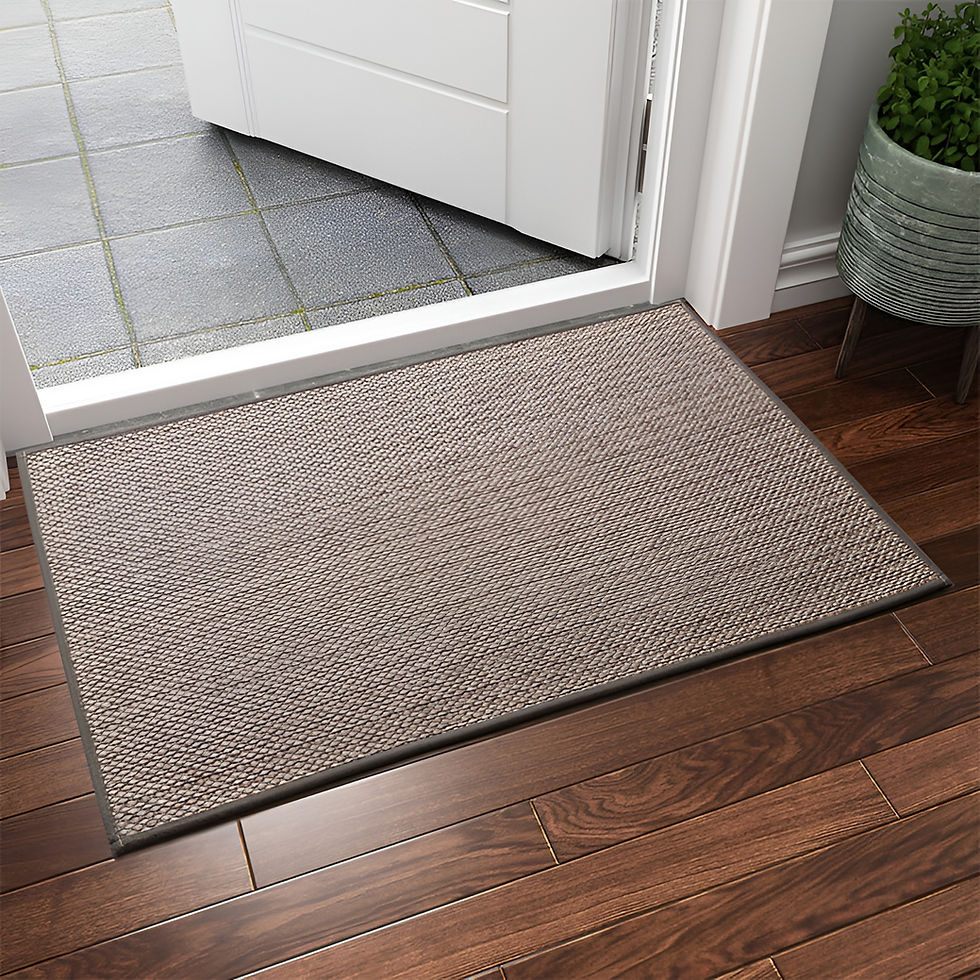The Top Door Mats for Keeping Your Home Clean Year-Round
- Floor Safety Store

- Dec 12, 2024
- 3 min read
The first thing that the visitors are met with when they arrive at your home is a doormat. While it may appear to be simply a location where people can wipe their feet after a rainy day, such Indoor Door Mats assist avoid dirt, mud, or even moisture from being carried into the house. In addition, during the winter months when snow, slush, and salt are scattered all over the sidewalks and driveways, it can be especially advantageous to have them.
Standard door mats shielding heavy foot traffic is what most are looking and completely neglect the doormats meant for all weather conditions.
Wet Conditions: Assists in reducing slip risks by eliminating water from being brought into the room.
Sunny Conditions: Damage or fading as a result of UV rays exposure can be avoided.
Sandy Conditions: Sand is effectively removed from shoes and even trapped inside the mat.
Snow and Ice: The mat averts ice or snow build up on it and allows proper traction to be maintained.
While this doormat is in existence, you do not have to compromise between cleanliness or fashion as this when trampled on, allows foot placed on it to never slip off. It is composed of very durable natural fibers that not only enable it to grasp the mud and dirt from shoes or even soak the rain or snow, but it is also non-slip which aids in keeping it in position while people step on it.
In order to clean it, all that is required is a good shake or two and the dirt and other small particles should fall off or be removed easily.
A Floor Mats should be able to serve its purpose during the winter; it should be able to withstand all snow, dirt and ice that gets on it. The ideal doormats for harsh winter conditions are those that are made out of rubber and some heavy-duty synthetic fibers.
Cold weather requires durable rubbers and strong synthetic fibers. These materials retain their elasticity at temperatures below freezing, and they are sturdy and wide enough to clear any frost or snow on your shoes or boots.
In order to limit the ice and snow being walked into the indoor areas, pick a doormat having raised patterns or grooves on its surface. A mat that has a backing that is non slip is also a good idea to avoid slippage. Additionally, your mat will need to be brushed on a regular basis to remove leftover residue.
For all those fortunate enough to own a house in a warm location, sand can be quite a problem which would mean a doormat that can withstand rough conditions is ideal. Rubber and coir are great examples of materials that can thrive in such environments. Coir is made from naturally occurring coconut husks and works great for rubbing off sand and dirt while rubber does not get damaged easily and is quite easy to wash and dry off.
It is worthwhile to look up to the specific environmental conditions associated with the place you are in. If winters are harsh with an abundance of snow, consider getting a doormat that is made from rubber dough. On the other hand, if you face rough hot and sandy weather, look for Coir Mats and other synthetic materials. Lastly, for wet and rainy weather conditions, get doormats that can dry off relatively quickly and have anti fungal and bacterial properties.
Adjusting your selection to the area’s climate while considering its all-weather cover, you will make your doorway neat, secured and appealing throughout the year.






Comments